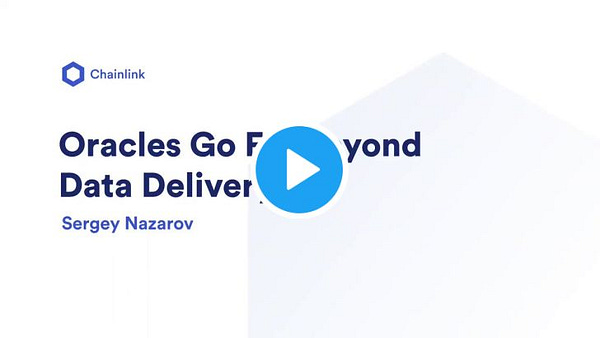Here are today’s trends to watch from Curve Market Cap
Chainlink joins the battle!
If you’re even remotely familiar with smart contracts, you’re already exposed to Chainlink.
It’s difficult to program very basic things in smart contracts. Common tasks like calling an API, generating a random number, or executing a cron job are natively impossible. Nodes need to agree on exactly how your code executes, but all of the aforementioned tasks can produce different results on different nodes. As a result, smart contracts are surprisingly dumb out of the box.
How can you build a Super Bowl betting dApp if your contract can’t tell who won? You need an “oracle” to determine the truth. Unfortunately, nobody’s wise enough to determine the truth in our hyper-polarized world. It’s hardest in crypto where everybody’s always out to rug each other. Bribing an oracle to say the Seahawks won the 2021 Super Bowl might be a relatively cheap attack, but it could pay out well on long odds from my bookie contract.
As a consequence, relying on oracles are one of the biggest causes of hacks in DeFi:

Chainlink has been working on the oracle problem for nearly as long as chains have been adding blocks… or at least long enough that $LINK marines claim he may actually be Satoshi.


Chainlink has easy to use contracts deployed to handle many of these otherwise difficult tasks. They already exist on popular protocols, including Ethereum and BSC. They have a very active developer community, easy to integrate libraries, and good coverage on testnets.


Given the value of solving the oracle problem, Chainlink is often among the first services to be integrated into upcoming protocols. Just this week, a new company RAI Finance announced their plans to bridge Chainlink to Polkadot:


Solving the oracle problem opens a lot of use cases in blockchain development, as explained by Satoshi contender and Chainlink founder Sergey Nazarov:


Serving as the arbiters of truth for financial services costs a pretty penny. It generally costs 1 $LINK to make a call to their network. The price of $LINK currently sits just above $30. Getting the truth from Chainlink costs about 10x the cost of buying a copy of the New York Times… you might therefore argue it’s ten time more reliable?
Good rule of thumb… if you’re rooting for the price of a token to go down, it’s probably a utility token.
The new $LINK / $sLINK pool on Curve is the first such pool (not to be confused with the low volume $linkUSD pool, a whole different beast). For the first time, the $LINK family can enjoy Curve’s bespoke slippage trading and liquidity benefits between $LINK and Synthetix’s $sLINK.
This fulfills sCIP#29, whose signal vote ended just a week ago. Curve Devs work fast! Astute readers may have even caught hints of the new pool dropping before it even launched:



At any rate, it’s safe to say the community is excited about Curve’s growing empire:


For more info, check our live market data at https://curvemarketcap.com/ or our subscribe to our daily newsletter at https://curve.substack.com/. Nothing in our newsletter can be construed as financial advice. Author is a $CRV staker and perma-bull.





